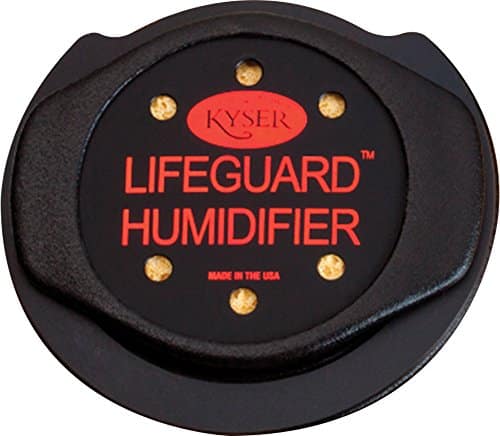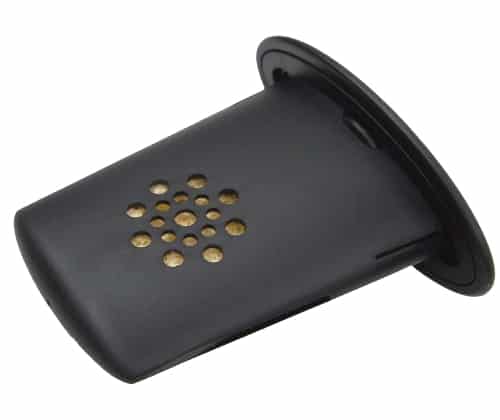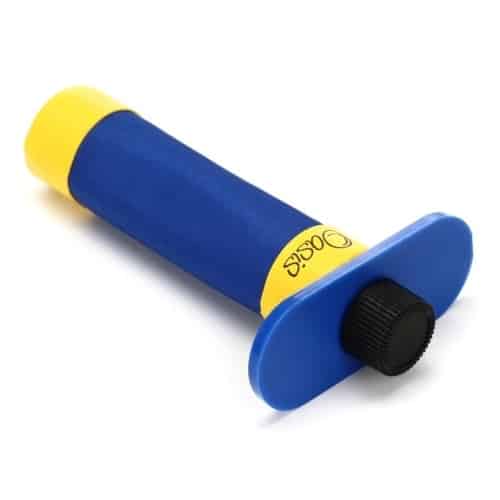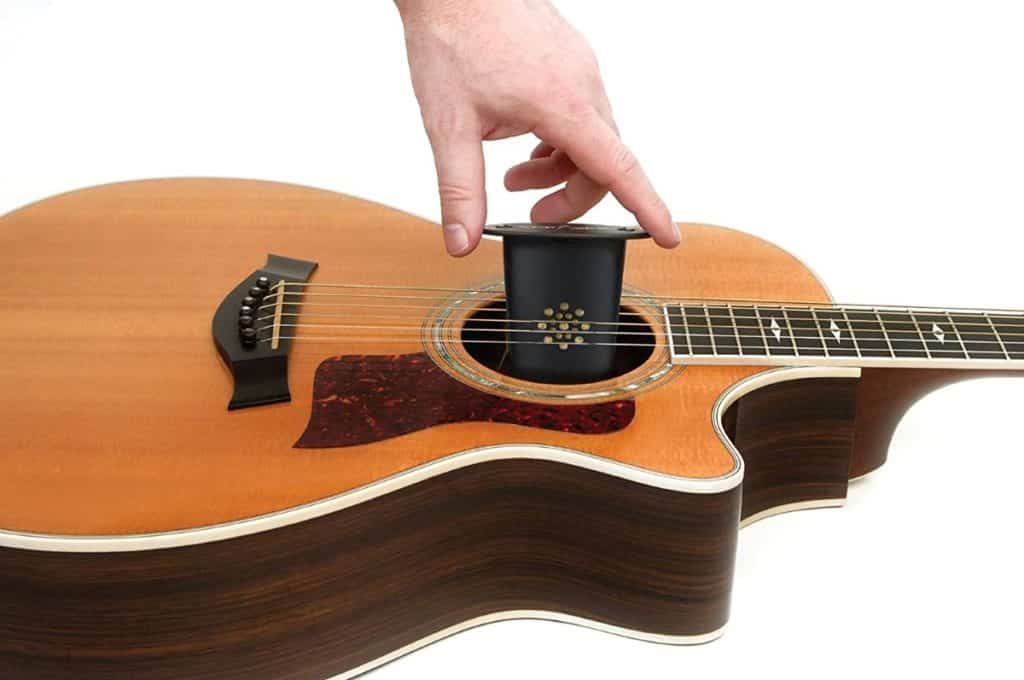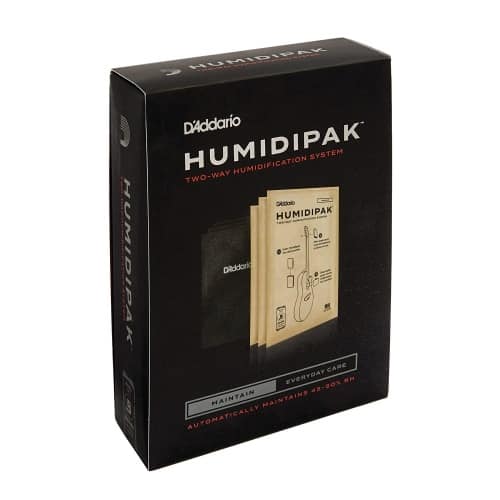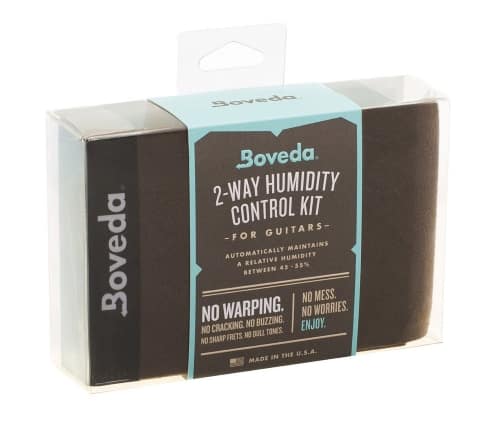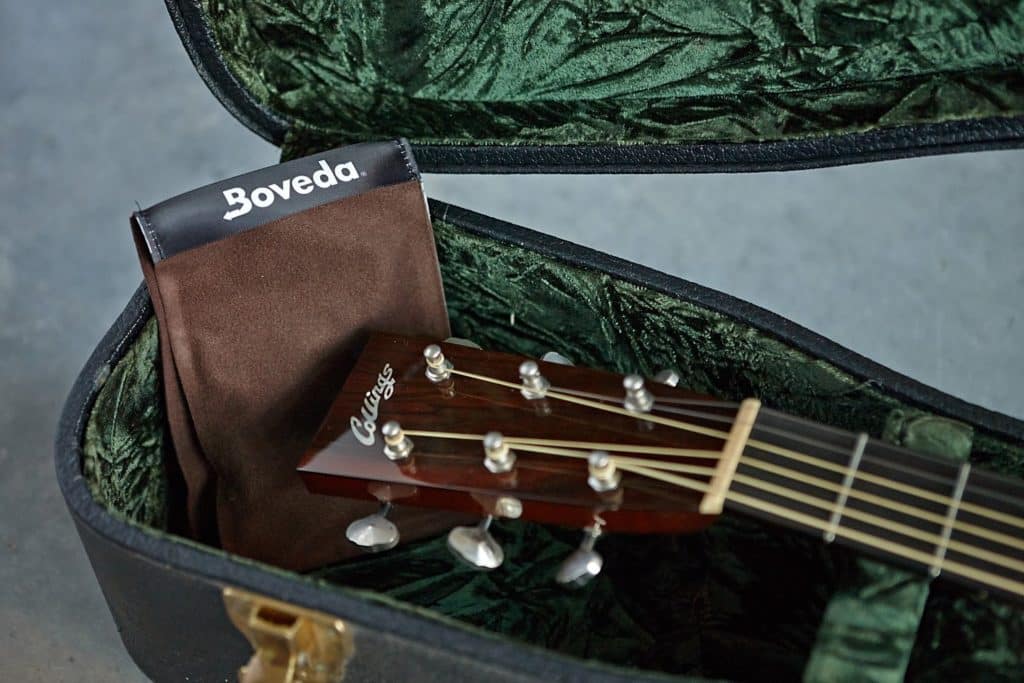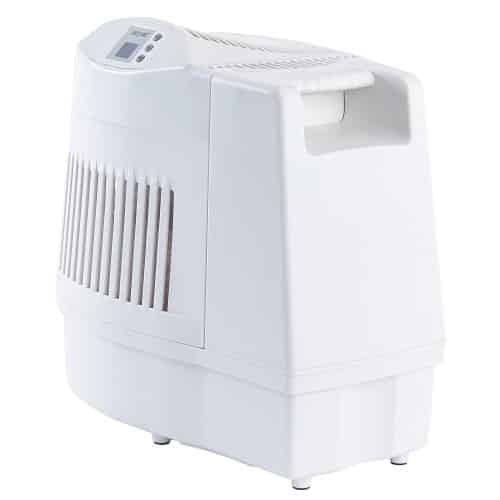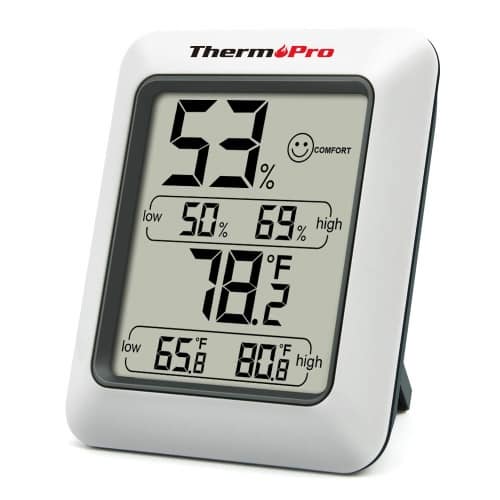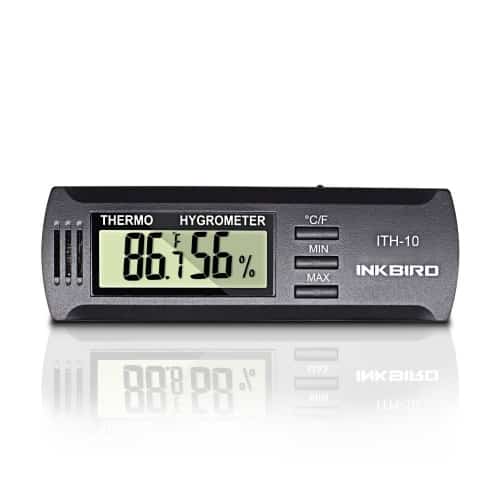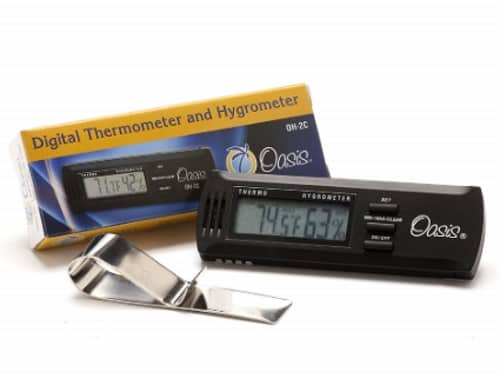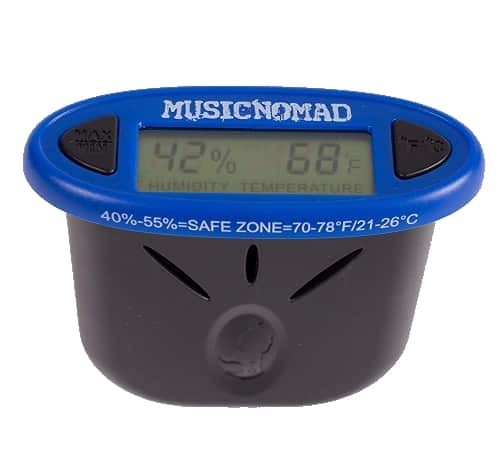What Is Humidity?
Humidity refers to the amount of water vapour in the air. The term “relative humidity” is used to note the amount of humidity as a percent, from 0-100%. The more moisture in the air, the higher the humidity. The lesser the moisture, the lower the humidity.
How Humidity Affects Guitars
Guitars are primarily made out of wood, and wood reacts to humidity. When there is less humidity in the air, wood can become dry and brittle. When there is a lot of humidity, wood can uptake excess moisture from the air and even expand in weight and size. This can have a very noticeable and negative effect on guitars (most notably on hollow body acoustic guitars) and many other wooden musical instruments.
Guitars are produced in climate-controlled environments. The tonewoods used in production are treated, dried and seasoned for optimal stability throughout the manufacturing process.
Have you ever noticed that your guitar plays great one day, and then another day, completely different? Perhaps the strings have become high, or low and buzzing all over the place. Maybe the tone changed, or the ends of the frets have become sharp? Or maybe you opened up the case to discover a crack along the entire top of your prized Taylor guitar. Ouch… been there.
Drastic changes in humidity can occur in as little as a day. Depending on the time of year, humidity, or lack of, can wreak havoc on musical instruments if not monitored and managed. It is worth mentioning that all wooden instruments are affected by humidity levels, but acoustic guitars are especially susceptible. Preventive measures are the key to keeping your guitar in top condition.
Humidity & Preventative Maintenance
Humidity monitoring is an important consideration as a guitar owner, but most importantly, with acoustic guitars. If not properly humidified, an acoustic guitar can develop cracks. Cracks can occur on the guitar body, binding, and fretboard predominately. When left beyond the initial surface cracks, the guitar has the potential to get much worse, affecting its structural integrity. Alternatively, if over humidified, an instrument can swell up, distort, become discoloured and even grow mould- not without first affecting its volume and tone.
To avoid these problems, you can take some preventative steps to maintain a consistent humidity level, as suggested by the manufacturer of your instrument.
Brand name guitar companies such as Taylor Guitars, Martin Guitars, Takamine’ Guitars, D’Addario Strings and many others recommend a relative humidity (RH) level of 40-55% as being safe for guitars with a temperature range of 21-25 degrees Celsius or 70-75 degrees Fahrenheit. If your guitar is left outside of these ranges, it can develop playability and structural problems. Consult with the manufacturer of your guitar for the specific humidity needs relating to your model.
Low Humidity (Dry) Symptoms
One of the most common signs of a dry guitar is one that develops sharp fret ends. When a guitar dries out, the fretboard shrinks slightly, and the metal frets will poke out along the edges of the fretboard. Protruding fret-ends can be corrected by re-humidification, fretboard conditioning, or fret filing.
Low humidity can cause wood shrinkage as it dries out, and eventually, this can lead to cracks. If you leave a guitar in a low humidity environment for an extended period of time, it can start to show symptoms such as:
- Action/ string height falls, producing string buzz
- Sharp fret ends extending beyond the edge of fret-board
- Woodgrain rising and rippling the finish
- Cracks in the finish
- Cracks in the wood
- (Acoustic) A hump developing on the fretboard where the neck meets the body
- (Acoustic) Guitar top sinking between the bridge and fingerboard
- Glue drying out and breaking away
How to Correct Overly Dry Conditions
Guitar Case Humidifiers
The single most effective method in protecting your guitar from low humidity is by using a guitar case humidifier. Generally, these are low cost (under $20) and can be found online or in any guitar store. There are several styles available, some being more effective than others, depending on your local climate (check which is best for your area). By having your guitar in a closed space such as a case, the humidifier can maintain the ideal ambient humidity needed for your guitar.
TIP: You can make your own with a cellulose (natural) sponge and a ziplock bag. Punch holes throughout the bag, dampen the sponge and you are good to go!
- [easyazon_link identifier=”B0002D0COE” locale=”US” tag=”lgs04-20″]D’Addario Acoustic Guitar Humidifier [/easyazon_link]
- [easyazon_link identifier=”B0018A5R5O” locale=”US” tag=”lgs04-20″]Oasis OH-5 Plus+ Guitar Humidifier[/easyazon_link]
- [easyazon_link identifier=”B000EENMKC” locale=”US” tag=”lgs04-20″]Kyser Lifeguard Humidifier for Acoustic Guitars[/easyazon_link]
- [easyazon_link identifier=”B00DKAQGTG” locale=”US” tag=”lgs04-20″]Music Nomad Humitar Acoustic Guitar Humidifier[/easyazon_link]
- [easyazon_link identifier=”B000AC6DVS” locale=”US” tag=”lgs04-20″]Dampit Guitar Humidifier Super[/easyazon_link]
2-Way Guitar Humidity Control Systems
Systems such as D’Addario’s Humidipak Automatic Humidity Control System automatically adds or depletes moisture to maintain the ideal humidity level of 45%-55% RH inside your instrument case. A system such as this is a great option that eliminates the guesswork and anxiety of maintaining your instrument’s ideal humidity levels.
- [easyazon_link identifier=”B000OMG0KI” locale=”US” tag=”lgs04-20″]D’Addario Humidipak Automatic Humidity Control System[/easyazon_link]
- [easyazon_link identifier=”B01B6AOITQ” locale=”US” tag=”lgs04-20″]Boveda Patented 2-Way Humidity Control for Guitars and Wood Instruments[/easyazon_link][easyazon_link identifier=”B07MCJ3VYK” locale=”US” tag=”lgs04-20″]iHumi 49 Percent Humidity for Wood Instruments and Guitar[/easyazon_link]
Room Humidifiers
If you keep your guitar in one room primarily, a standard room humidifier will keep adequate humidity levels while allowing the instrument to be left out in the open and ready for playing. I’d suggest buying a stand-alone digital hygrometer to monitor humidity levels closely and to be sure your humidifier is keeping up when heating or air conditioning systems are operating, both of which dry out the air considerably.
Which Kind of Room Humidifier Is Best?
There are typically 3 kinds of humidifiers available: Cool mist (ultra-sonic), warm mist (steam vaporizer), and evaporative (cool mist/fan). Every one of these types of humidifiers will get the job done, but there are pros and cons of each.
Cool Mist Humidifiers
Cool mist humidifiers work by using ultrasonic vibration to break water into tiny particles and disperses them into the air. They are very quiet and do not raise the temperature of the room.
Pros: Quiet, filterless (no reoccurring costs), doesn’t raise the temperature of the room, low-cost.
Cons: Requires regular cleaning, can produce white-dust (from minerals in the water), can disperse pathogens if in the water.
What is White Dust?
White dust is caused by mineral content in the water that goes into the humidifier. As the water vapour is dispersed into the air, it eventually lands on furniture and other surfaces (like guitars). The vapour dries and leaves its mineral content behind in the form of white dust. For most people, the white dust is nothing to be concerned about; however, it could be problematic for some people with allergy, asthma or other sinus health conditions. The quality of water will dictate how much “white dust” is produced in the room. Many will use distilled (best) or reverse osmosis water without any problems. Other times, there are water demineralization cartridge products designed for humidifiers to minimize this problem.
Warm Mist Humidifiers
Warm mist humidifiers work similar to a kettle- by boiling water into steam. These are relatively quiet as well but have the additional benefit of creating warmer, cleaner air in the room.
Pros: Quiet, filterless (no reoccurring costs), produces clean, pathogen-free vapour, low-cost, low maintenance.
Cons: Can be dangerous if left unattended (hot-steam), can be difficult to regulate output.
Evaporative Humidifiers
Evaporative humidifiers rely on fans to blow air through their wick filters. The water wicks through the filter as the fan blows, which disperses the water vapour. They are not typically as quiet as the others, but they can produce better results for larger rooms/homes.
Pros: Great for larger rooms, minimal white-dust (minerals are filtered out), doesn’t raise the temperature of the room, may offer features such as humidity regulation.
Cons: Fan noise, higher cost, maintenance costs (filter replacements).
- [easyazon_link identifier=”B013IJPTFK” locale=”US” tag=”lgs04-20″]Pure Enrichment MistAire Ultrasonic Cool Mist Humidifier[/easyazon_link]
- [easyazon_link identifier=”B07PXMWHBM” locale=”US” tag=”lgs04-20″]Ultrasonic Humidifier for Bedrooms, Whisper-Quiet Operation[/easyazon_link]
- [easyazon_link identifier=”B081H3CHFP” locale=”US” tag=”lgs04-20″]Premium Ultrasonic Cool & Warm Mist Humidifier[/easyazon_link]
- [easyazon_link identifier=”B001FWXKTA” locale=”US” tag=”lgs04-20″]Vicks Warm Mist Humidifier[/easyazon_link]
- [easyazon_link identifier=”B00JP6HQBG” locale=”US” tag=”lgs04-20″]Honeywell Filter-Free Warm Moisture Humidifier[/easyazon_link]
- [easyazon_link identifier=”B002AQUK9S” locale=”US” tag=”lgs04-20″]AIRCARE Digital Whole-House Console-Style Evaporative Humidifier[/easyazon_link]
Guitar Rehumidification – What to Expect
Depending on how dehydrated it is, a guitar will generally respond well to a properly humidified environment (45%-55% RH) and can show signs of improvement within a week or two. Extremely dry guitars may require longer. In some special cases, you may want to double up on your humidification media. If needed, you can insert two humidifiers in the soundhole with an additional one at the headstock. This can expedite recovery in critical cases when needed, and in extremely dry environments, the additional media will help bolster adequate humidity levels.
As the guitar improves, you will notice cracks getting smaller and beginning to close, ripples in the wood grain or finish relaxing and improving, sharp fret ends becoming less prevalent, and string height returning to normal. With ongoing monitoring and humidification, cracks may completely close (and seal), structural warping may return to normal (such as humps at the 14th fret and sunken soundboards), and playability can be restored.
Keep in mind, there is an entire spectrum of dehydration accompanied by corresponding symptoms or damages. Extreme cases should be approached with caution and only after the advice of a seasoned luthier/ technician.
High Humidity (Wet) Symptoms
High moisture levels can be absorbed by the wood of the guitar, causing swelling, warping, and structural distortion. Here are a few signs to watch out for:
- High action- strings that are unusually high off the fretboard, making it difficult to play
- Frets popping ‘up’ from the fretboard
- Warping of the neck
- Finish peeling, bubbling, or discolouring
- Guitar sounding dull due to high water content in the wood
- Body bulging
- (Acoustic) Guitar top and back bulging out
How to Correct Overly Humid Conditions
Although overly damp conditions are not as common as dry, there are areas where it is an issue. If you live in a damp place, Taylor Guitars suggests prevention as the first line of defence.
- If your climate does not have high humidity year-round, consider using the Two-Way Humidification System from D’Addario®. Featuring two-way humidity control technology, the breathable membrane packets will automatically maintain a relative humidity level of 48 percent by absorbing excess moisture in humid environments.
- In areas with extreme or year-round high humidity, place several silica gel or bamboo charcoal packs in the guitar case and change them every few months.
- Use a room de-humidifier where you store your guitar. It’s also wise to monitor the humidity levels with a digital hygrometer. You can find a good digital hygrometer through your local music stores or online retailers.
- Periodically remove the guitar and blow-dry the interior of the case with a hairdryer for 10-15 minutes.
Tips for Seasonal Humidity Changes
We all know humidity changes as the year progresses, and this can be minimal or extreme, depending on your location and where your guitar is stored.
Summer – In general, summer weather brings higher temperatures and higher relative humidity. The instrument’s wood swells as it absorbs moisture. If you use an air conditioning unit in your home, keep in mind that these systems will make the air drier, and indoor humidity levels can fall as a result.
Winter – Winter weather generally means dry air- it is the worst time for guitars. The relative humidity can fall to the extremes when heating systems are in use.
Hot and Cold Temperatures
Heat exposure can also have a destructive effect on wooden instruments. For example, when a guitar is left in a trunk of a car on a hot sunny day, the heat exposure can soften the glue joints so much that they literally fall apart.
On the other hand, in cold climates such as where I live (in Alberta, Canada), the freezing temperatures can be quite destructive in their own way. Some instruments may have delicate finishes, such as with nitrocellulose lacquer. A guitar brought in from the cold into a warm home or bar should be left to acclimatize before it is removed from the case. I have witnessed hairline cracks, otherwise known as “checking,” instantly appear in a finish from the contrasting temperatures. A sad day indeed… or cool, if you’re into the relic look. Other times, this same contrast in temperatures can literally split acoustic guitar tops in an instant.
Conclusion
Get yourself a digital hygrometer. A hygrometer measures the humidity of the air relative to temperature. These are available at most guitar stores as well as amazon.com and many other outlets. Know the relative humidity of the space you keep the instrument stored in. If it’s comfortable for you, it’s probably comfortable for your guitar.
- [easyazon_link identifier=”B0140UC9XQ” locale=”US” tag=”lgs04-20″]Inkbird Digital Thermometer and Hygrometer for Guitar [/easyazon_link]
- [easyazon_link identifier=”B01H1R0K68″ locale=”US” tag=”lgs04-20″]ThermoPro Digital Hygrometer and Thermometer[/easyazon_link]
- [easyazon_link identifier=”B0018A21QC” locale=”US” tag=”lgs04-20″]Oasis OH-2 Digital Hygrometer w/clip[/easyazon_link]
- [easyazon_link identifier=”B0002D000K” locale=”US” tag=”lgs04-20″]Planet Waves Hygrometer Humidity And Temperature Sensor[/easyazon_link]
- [easyazon_link identifier=”B00VVMLH9E” locale=”US” tag=”lgs04-20″]Music Nomad HumiReader Hygrometer and Temperature Monitor[/easyazon_link]
- [easyazon_link identifier=”B07GR65CNT” locale=”US” tag=”lgs04-20″]JEDEW 2-Pack Mini Hygrometer Thermometer Monitor[/easyazon_link]


